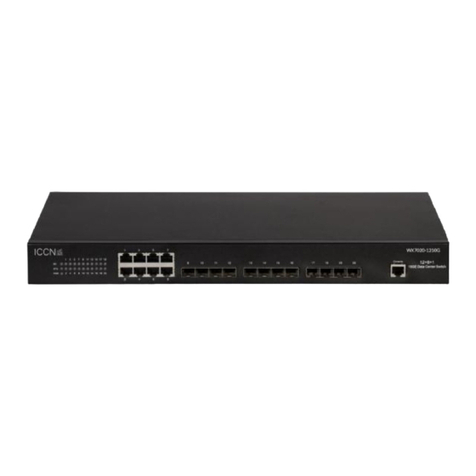
Quick considerations when troubleshooting
This section is intended to help solve the most common issues with the PoE Switch
Incorrect connections
Every port on these switches can automatically detect either straight or crossover
cables when you link it with other Ethernet devices but other devices may require a
specific cable type (depending on the device). Make sure to confirm cable
requirements from the device vendor and choose the appropriate cable to connect
between the units. The RJ-45 connectors should use correct UTP or STP cable,
10/100Mbps port use 2-pairs twisted cable. If the RJ-45 connector is not correctly
pinned then the link will fail.
Faulty or loose cables
Look for loose or obviously faulty connections. If they appear to be OK, make sure
the connections are snug. If that does not correct the problem, try a different cable,
utilize cable testing devices, and other methods to confirm cable integrity.
Non-standard cables
Non-standard and incorrectly terminated cables may cause numerous network
collisions and other network problems, and can seriously impair network
performance. A cable tester is the recommended tool for network installation.
Utilization of non-standard cables could negatively impact product warranty. Be
sure that length of any twisted-pair connection does not exceed 100 meters (328
feet). We suggest using Category 5e cable when connection to power a device.
Improper Network Topologies
It is important to make sure that you have a valid network topology. Common
topology faults include excessive cable length and too many repeaters (hubs)
between end nodes. In addition, you should make sure that your network topology
contains no data path loops. Between any two ends nodes, there should be only one
active cabling path at any time. Data path loops will cause broadcast storms that will
severely impact your network performance.
Diagnosing LED Indicators
To assist in identifying problems, the switch can be easily monitored through panel
indicators, which describe common problems the user may encounter and where
the user can find possible solutions. If the LED display detection isn’t correct, please
unplug then plug in the cable again.
If the power indicator does not light when the power cord in plugged in, you may
have a problem with the power outlet or power connections, power losses, or surges
at power outlet. If the problem still cannot be resolved, please contact the local
dealer for assistance.




























